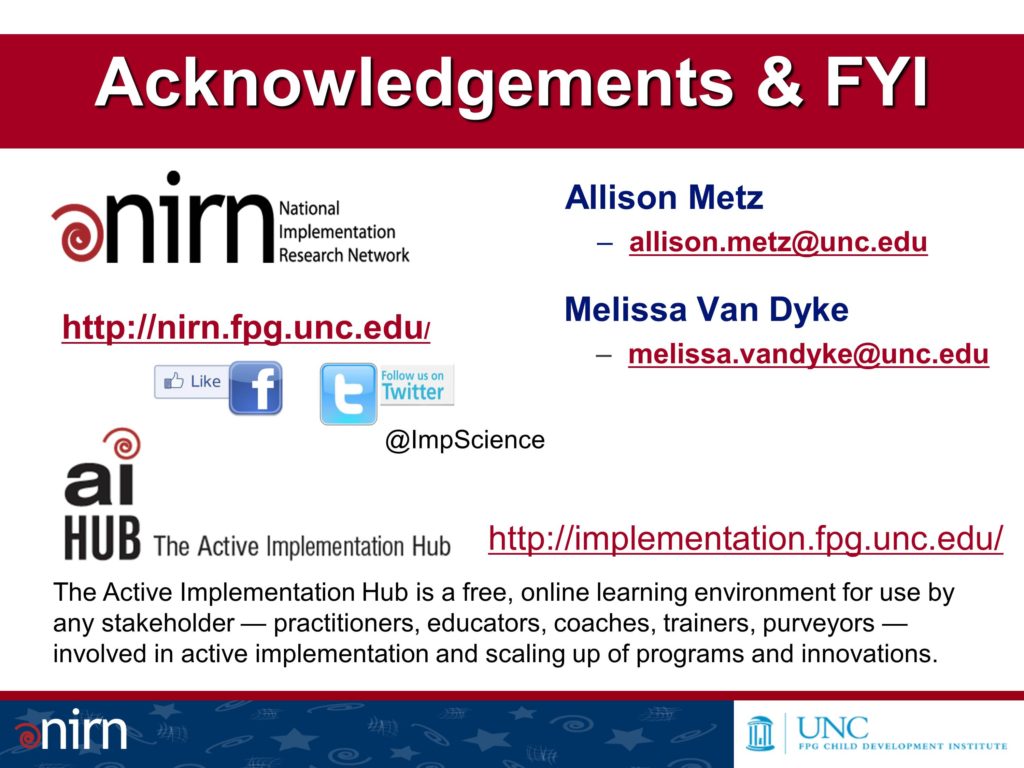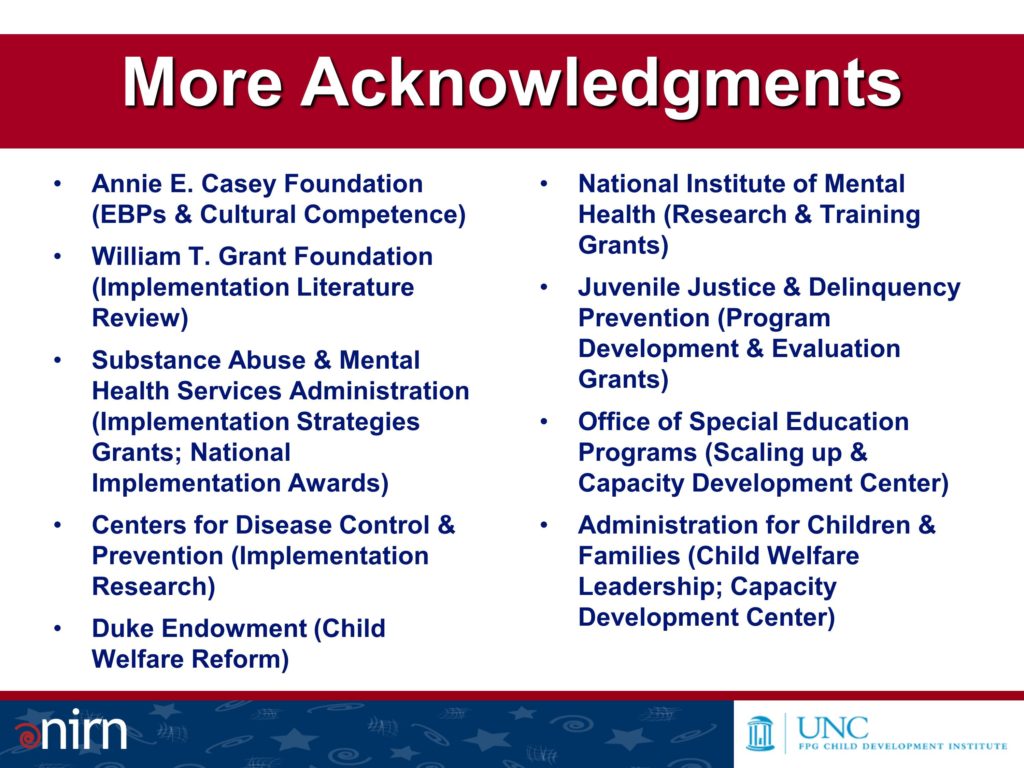The following is a transcript of the presentation video, edited for clarity.

For our time today, the aims are bold. I want you to think of this time as an orientation to lay out some big ideas. In an effort to manage expectations, I’ not sure we will get around to sorting out that whole word salad. But you will get a sense of what some of this work looks like in different ways.
I want to spend just a couple slides going into some of the definitions to give us some anchoring and some bearing. And then characterize what we do know about this kind of work and what it takes to apply evidence in real world practice. We are always reminded it can be quite noisy, quite complex, and dynamic — meaning it changes over time. And then we will consider an application or two, and in particular, encourage you to do the same.
Defining Implementation
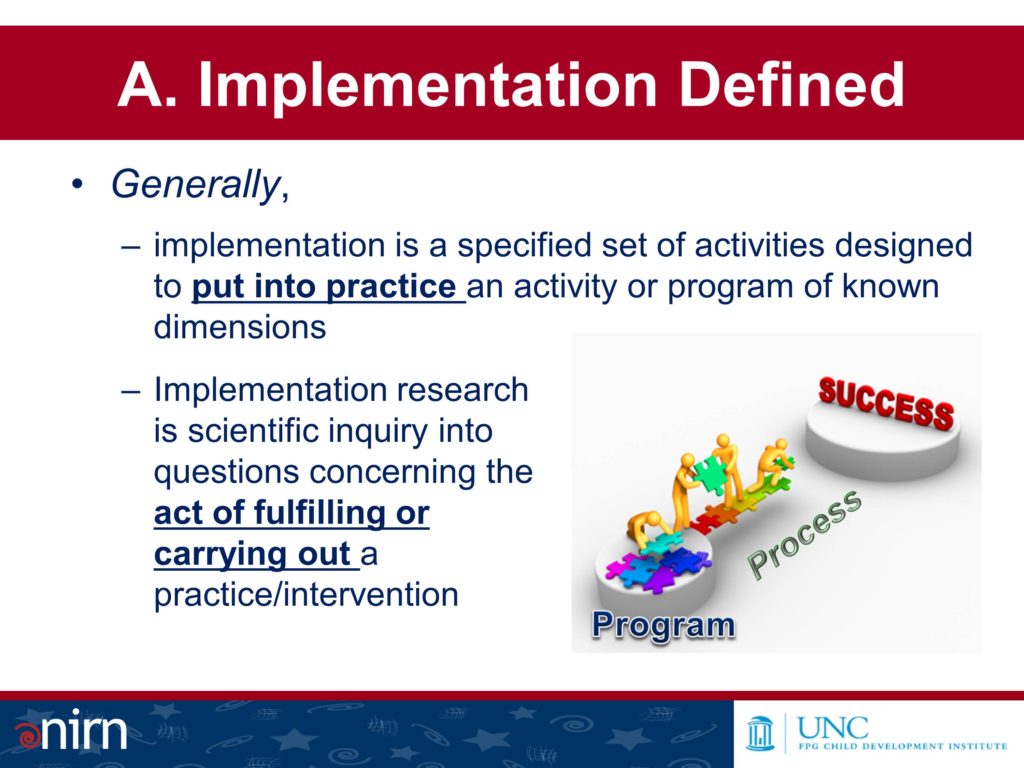
Some basic, key aspects of what we might call implementation are underlined here, in terms of putting something into practice as well as fulfilling or carrying something out. Really what’s implicit there is a process, that we’re going from something that we know. We have some sense of it, whether it’s a kernel, or in some cases maybe a more defined packaged, if you will, kind of evidence-based program.
But there’s no guarantee that that’s going to lead to success because there’s a process of going through putting the program into place and getting to those outcomes.
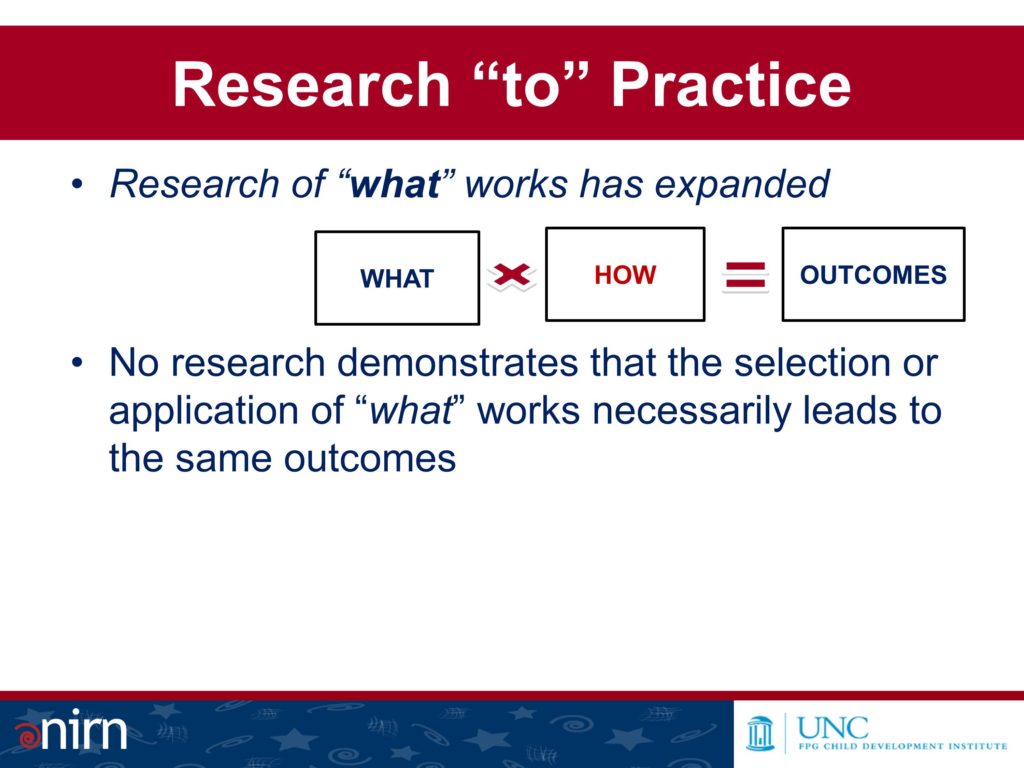
What we do know about research to practice in the context of this work is that the research has really expanded over several years. We do know more about some things that are working, not only in controlled, but also in some real world settings through other kinds of effectiveness trials.
As I mentioned before when it comes to putting those same kind of programs or evidence-based interventions into practice, it’s not really a carte blanche kind of issue that they’ll automatically lead to the same kind of outcomes.

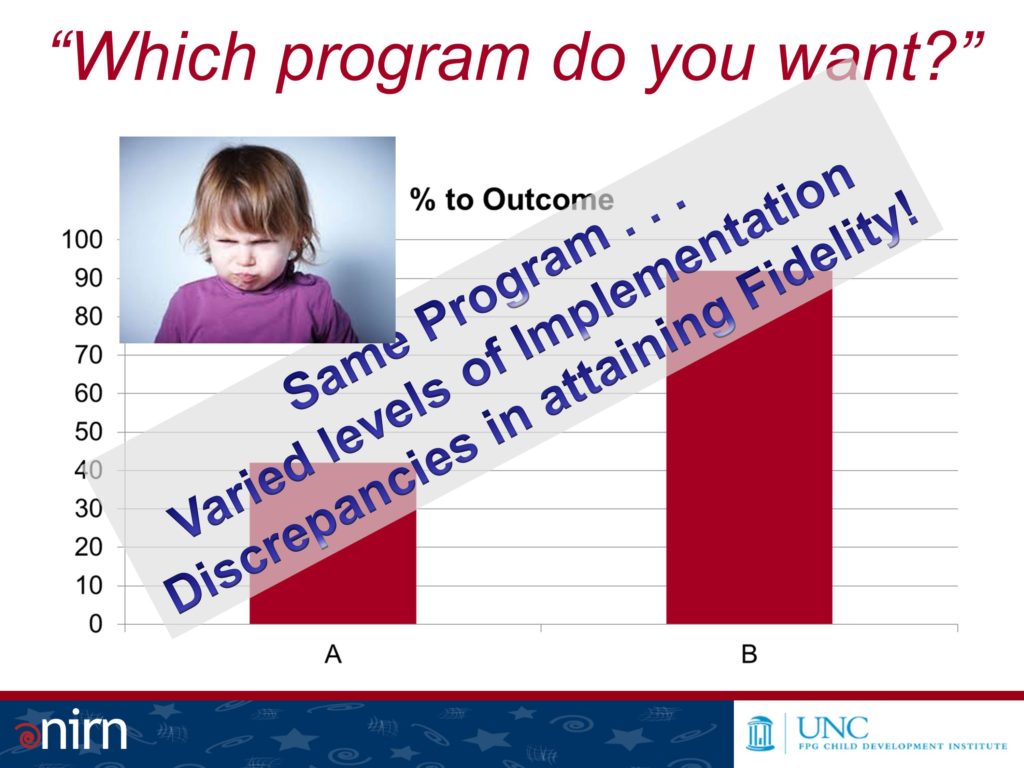
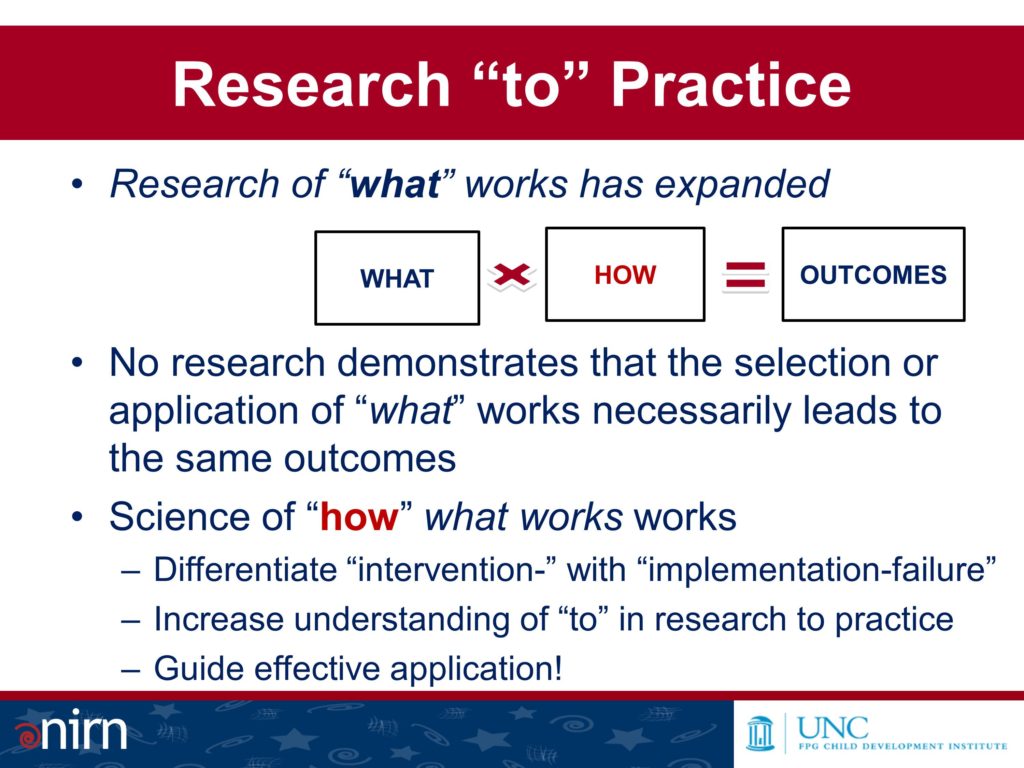


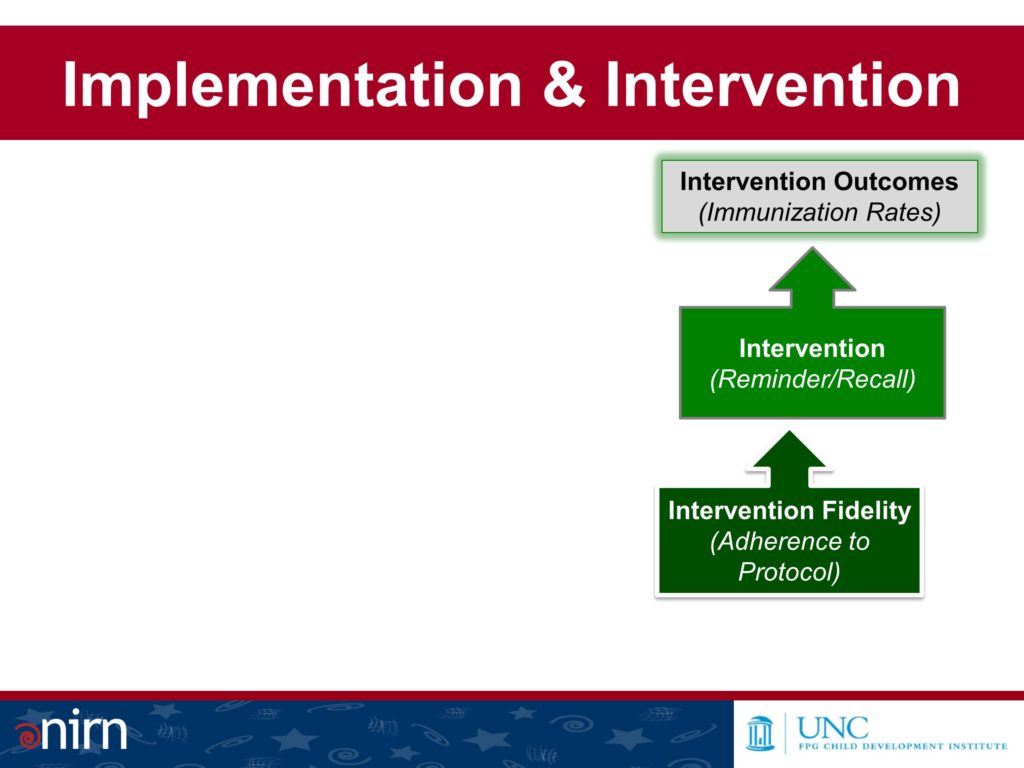
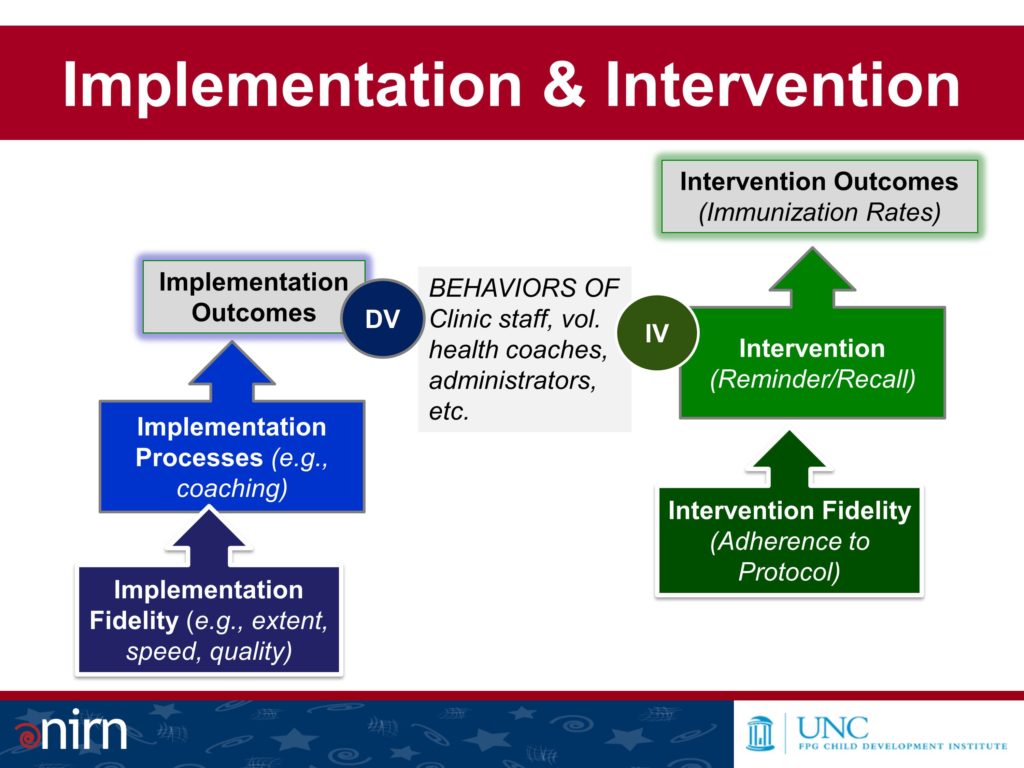
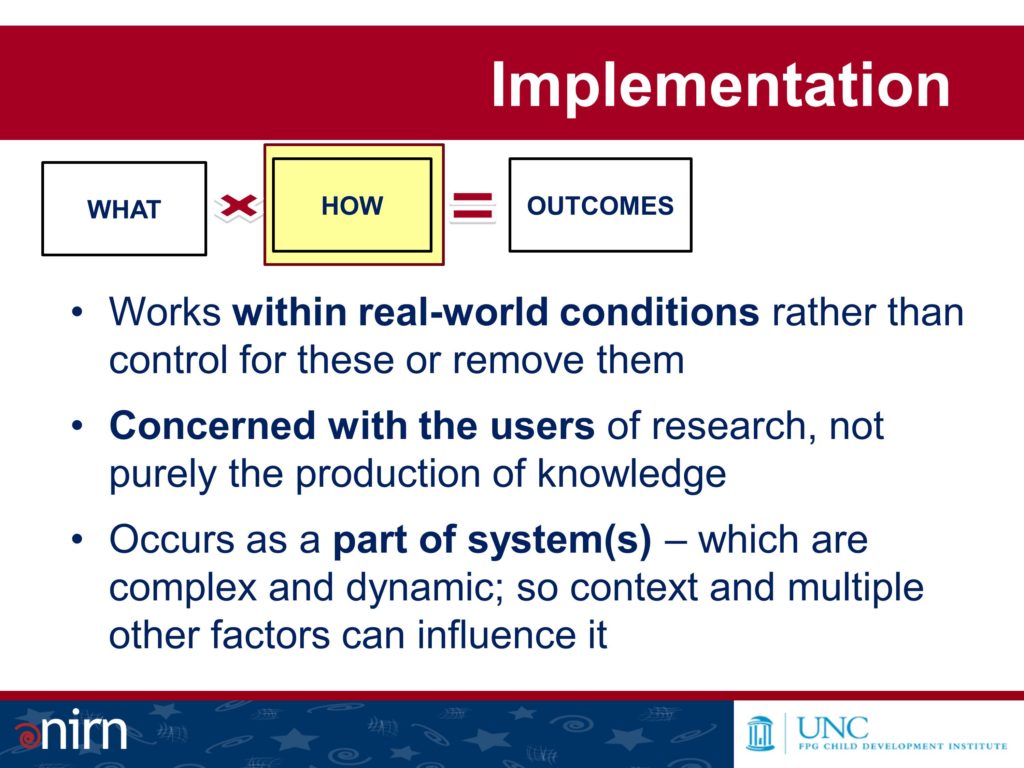
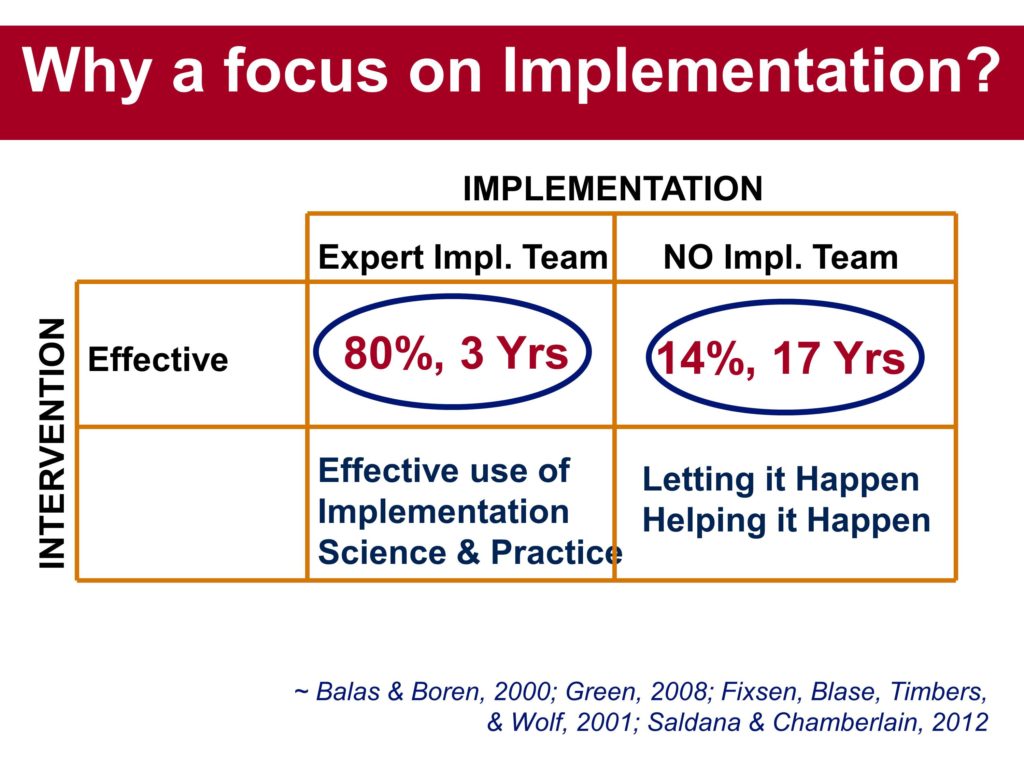
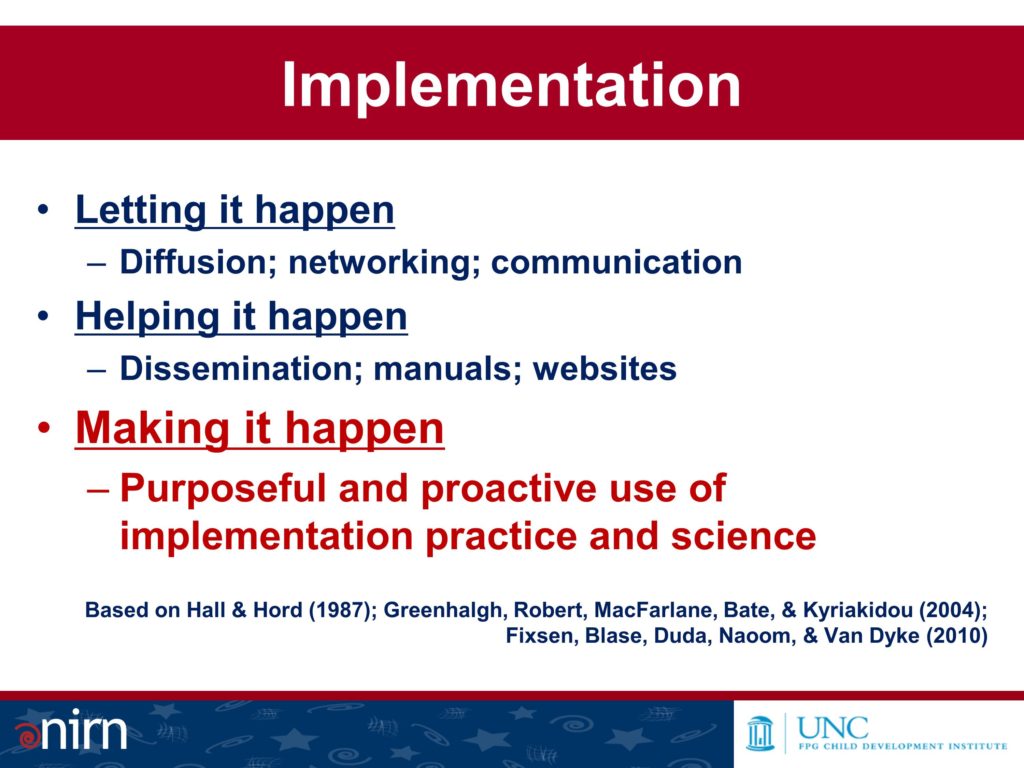

What Do We Know: Active Implementation Frameworks
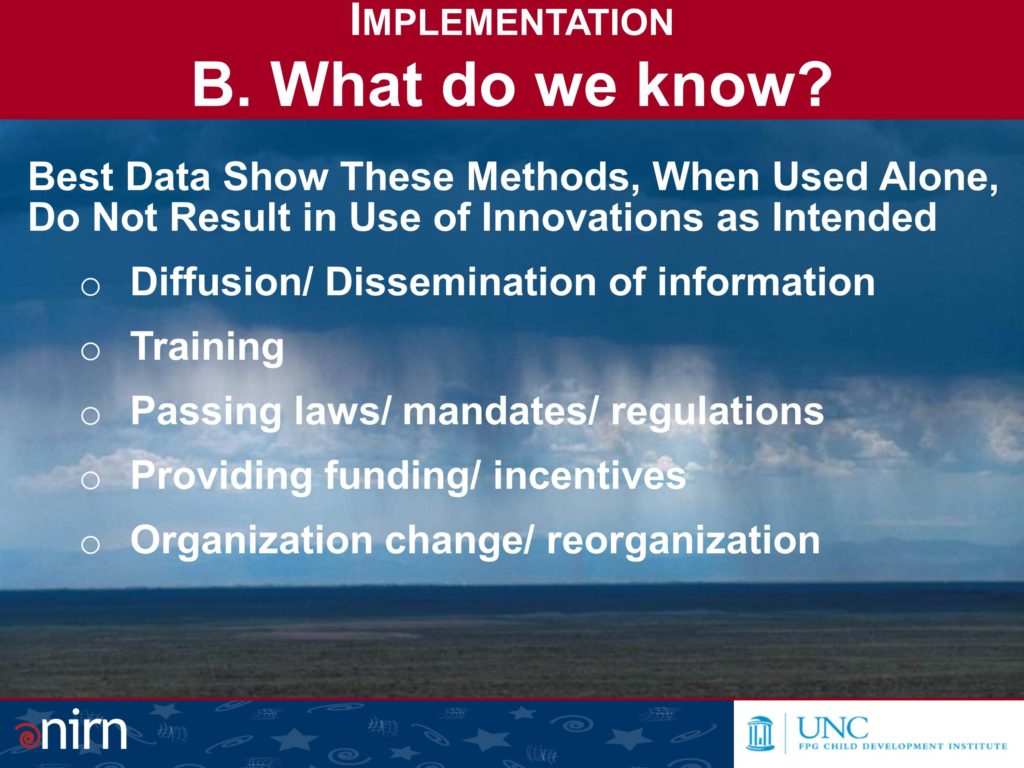
What do know about implementation science so far? We do know that, kind of like rain not quite reaching the ground, there are some well-designed, well-intended approaches that aren’t quite getting us the uptake or impact in terms of implementation that we would like.
The best data is showing that these kinds of methods, when they’re used alone, don’t necessarily result in use of the innovations as intended for getting to the outcomes that matter and the outcomes that we’re trying to get at. Training alone or dissemination alone or other approaches, they don’t quite get us the return on investment that we’re looking for.
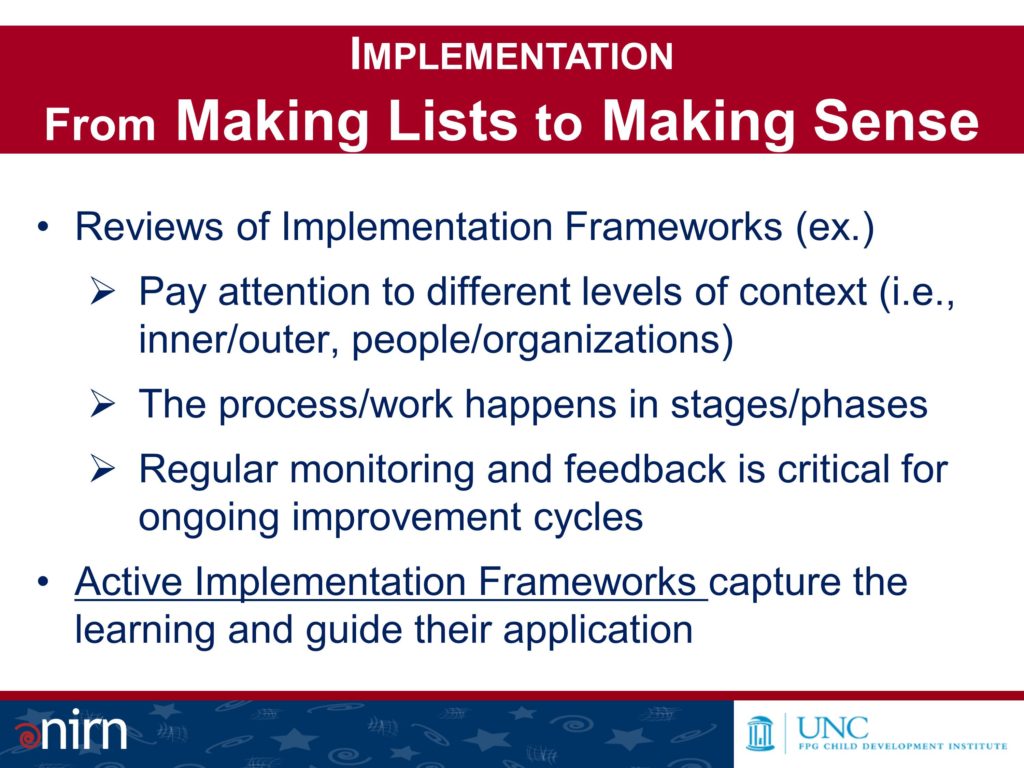
We’re kind of at a stage moving from making lists to making sense. We know enough about factors that are influencing implementation practice, especially in the last five or six years in light of a few very comprehensive reviews that have looked at implementation frameworks or models, that are pointing to a core set of themes that are important, or factors that are important to address.
I’ve listed just a couple of examples of what some of those things are here, in terms of paying attention to different levels of context, you know the whole idea of the practitioner as well as the organization and the system. And that this processing work happens in a phased-based approach. This isn’t turn it on, turn it off. There are a set of activities and work that can be done in implementation to set you up for success.
You’ve heard from many of us, and I’m sure you will continue to hear the importance of regular monitoring and feedback — feed forward and feedback — that’s critical in multiple layers of this work for ongoing attention to and improvement to implementation.
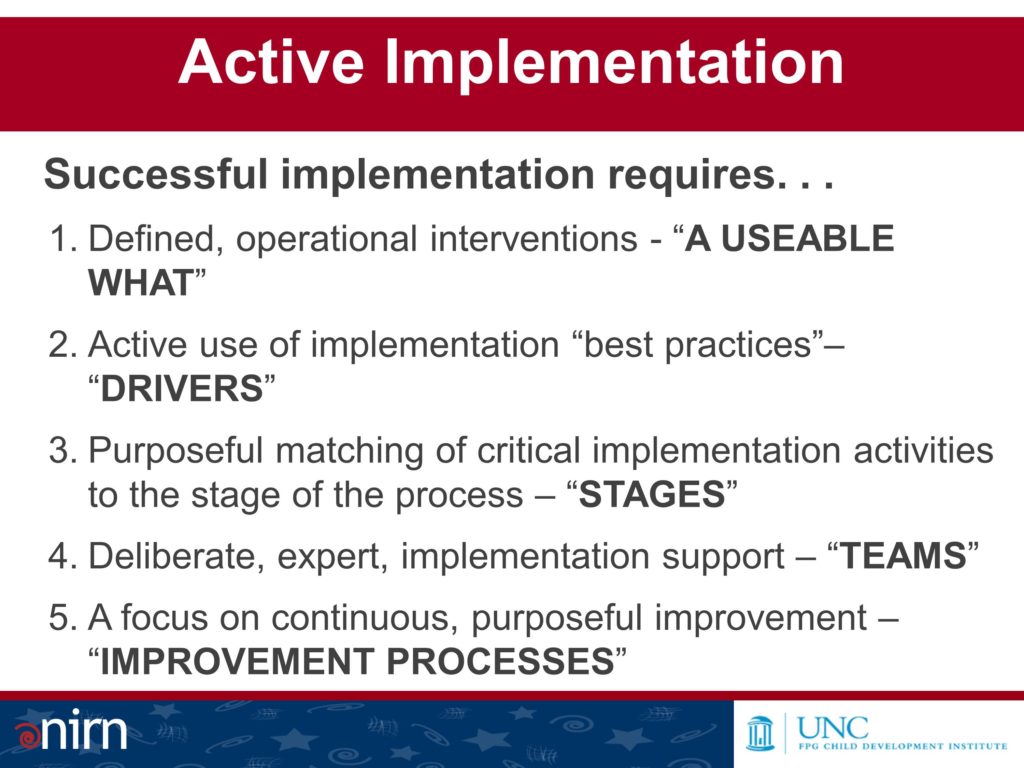
What I’m going to talk about then that is kind of a culmination of some of this, and a representation, are what are called the active implementation frameworks that are part of the work that we do at NIRN.
With the active implementation frameworks, what it suggests is that successful implementation really starts with the what. We need some specificity about the essential ingredients, about what is the what. So that when it’s trying to be replicated, we know what those essential ingredients are and we have an idea of how to measure the extent that they’re present and the strength that they might have.
Successful implementation really does require active use of implementation best practices. These are evidence-informed best practices in terms of some implementation work that’s been done. And we might call those the drivers of implementation.
I already kind of alluded to the idea of purposeful activities that occur within stages of this work.
And a deliberate, purposeful focus on people, or the who of this work, especially in kind of systems and transformational change projects.
Implicit in there is that focus on continuing improvement or improvement cycles.

What: Usable Intervention Criteria
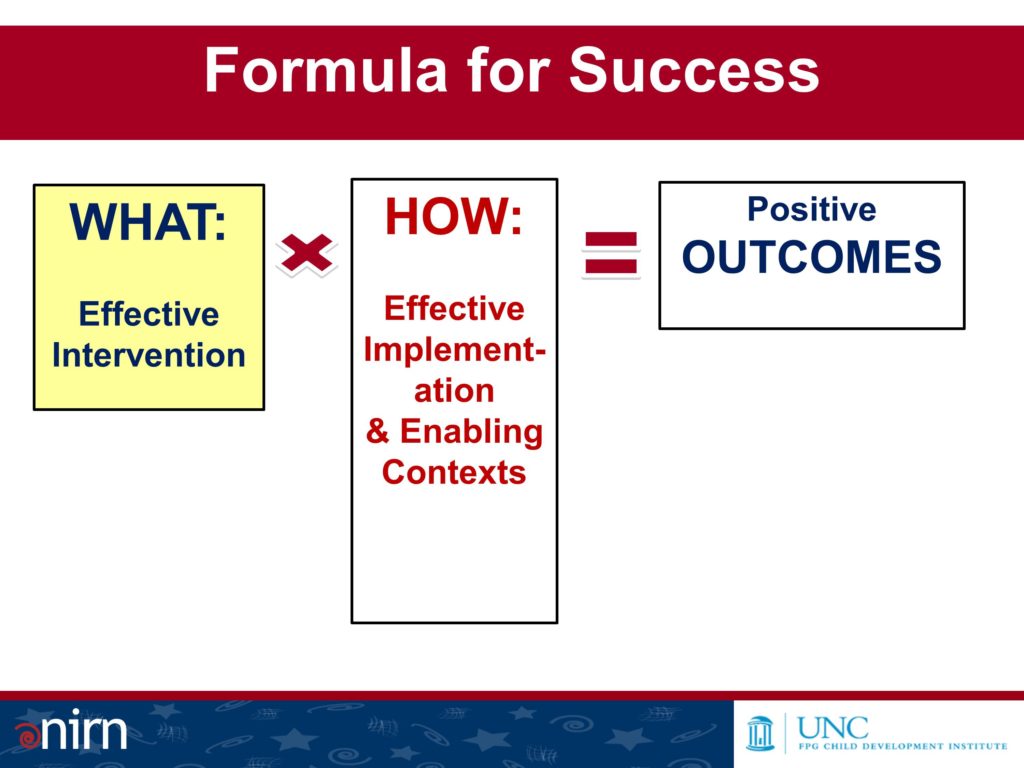
I’m going to anchor some of this into what’s called this kind of formula for success that reminds us that it’s not just attention on the what to get to the outcomes that we care about, there’s a real deliberate focus on the how.
If you pay close attention you realize that there’s a multiplying factor here. So imagine if either one of these are zero, or either one of these is put into place on a level less than optimal, then you’re only getting a percentage of the kind of outcomes that you’re looking for.

Let me start with the what and emphasize that you’d be really surprised at the extent to which these proven interventions are not really defined in enough detail so that they are functional, operational, very specific. So that they’re teachable, that they’re learnable, that they’re measurable, and repeatable. That’s really one of the critical aspects of where implementation has to start.
In some cases, purveyors of certain evidence-based programs, or even in the case of some of the work that I’m doing with the California Department of Child Welfare, where they’re developing an evidence-informed practice model, some of the real work starts with operationally defining the what.
So you can say, what are you seeing, what are people saying and doing, to be able to say, behaviorally, this is what we mean by engagement. Or this is what we might mean by outreach, or different aspects that might be essential functions.
How: Drivers, Improvement Cycles, Enabling Contexts
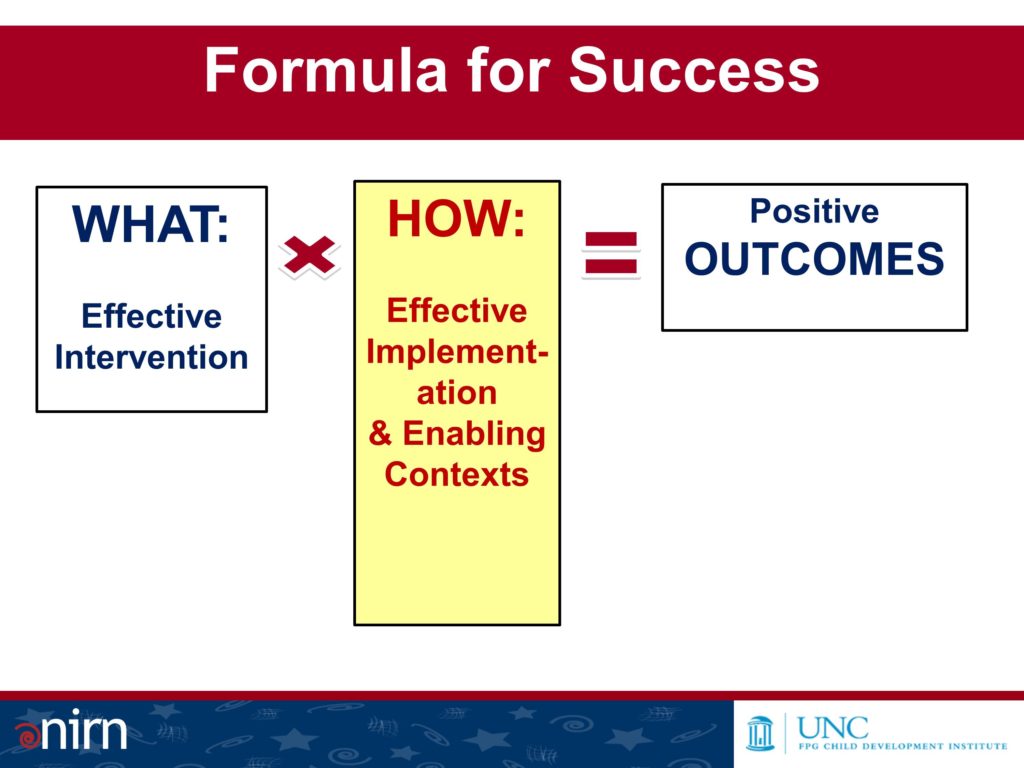


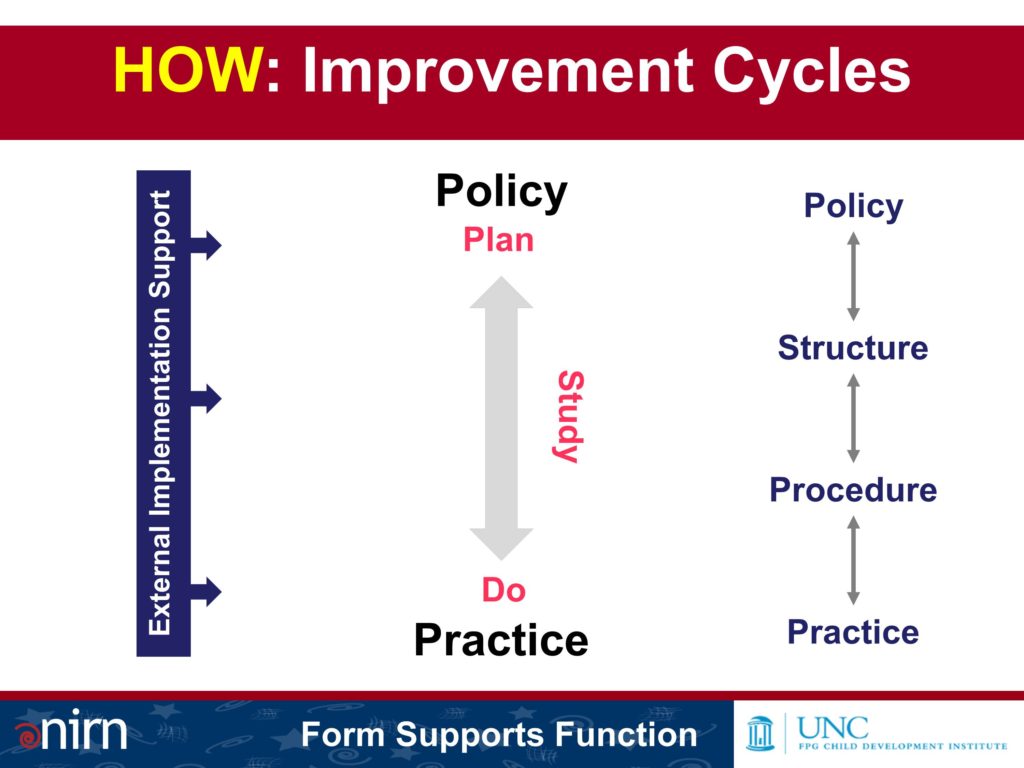


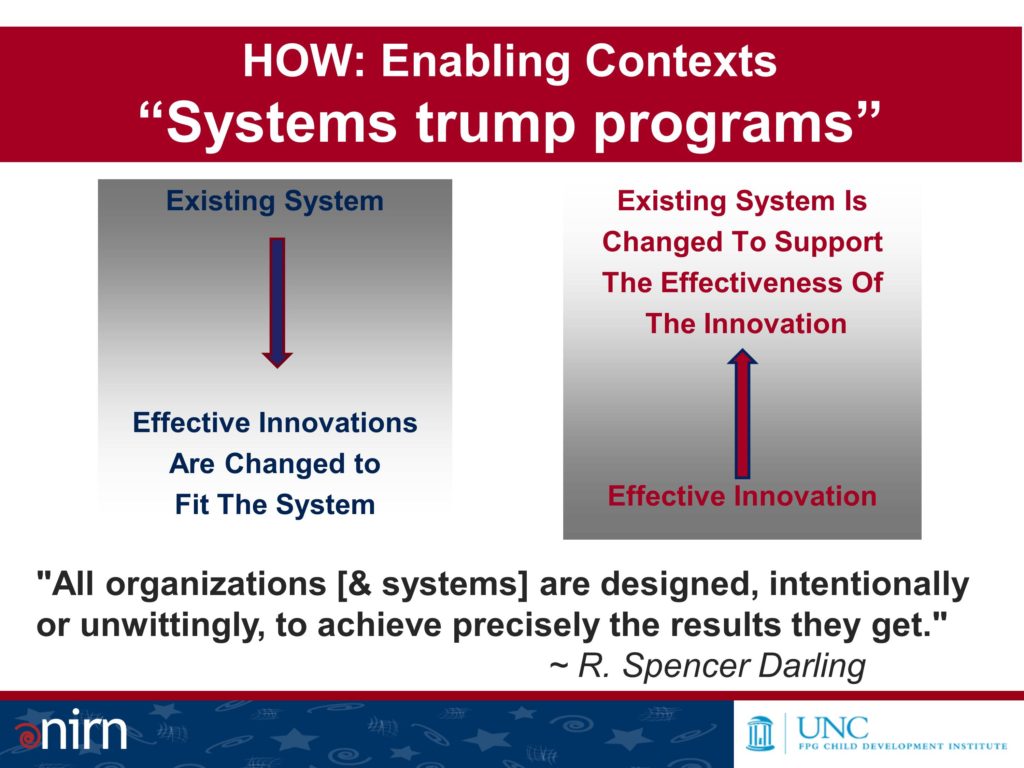
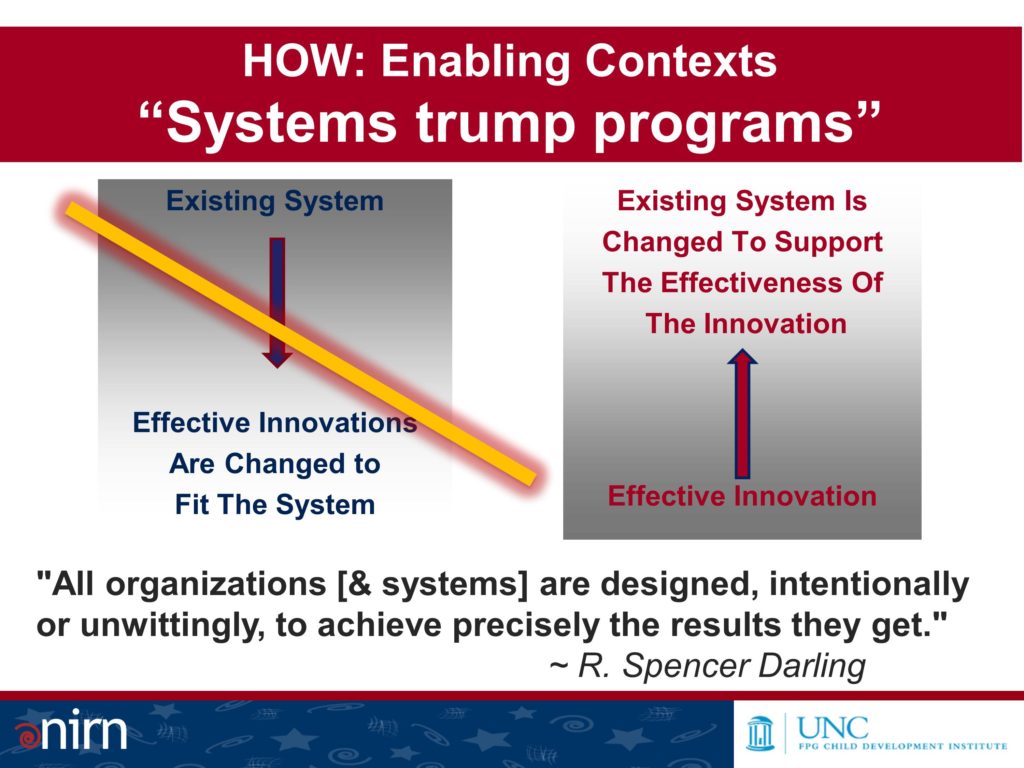
Who: Implementation Team(s)
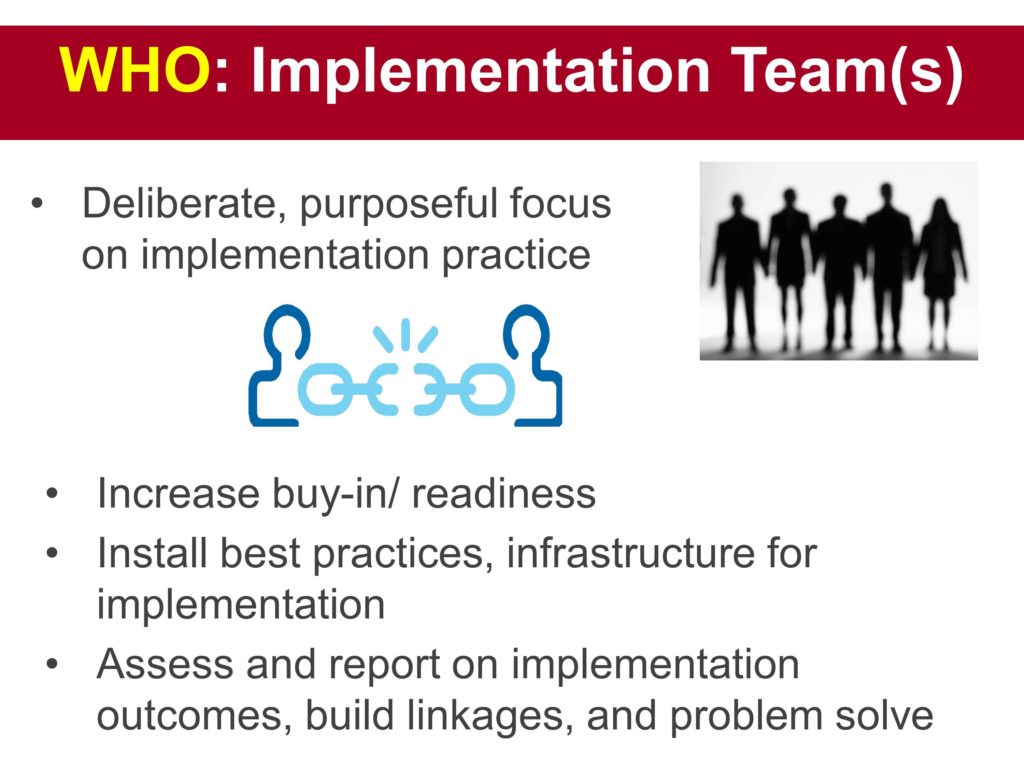
How/When: Implementation Stages
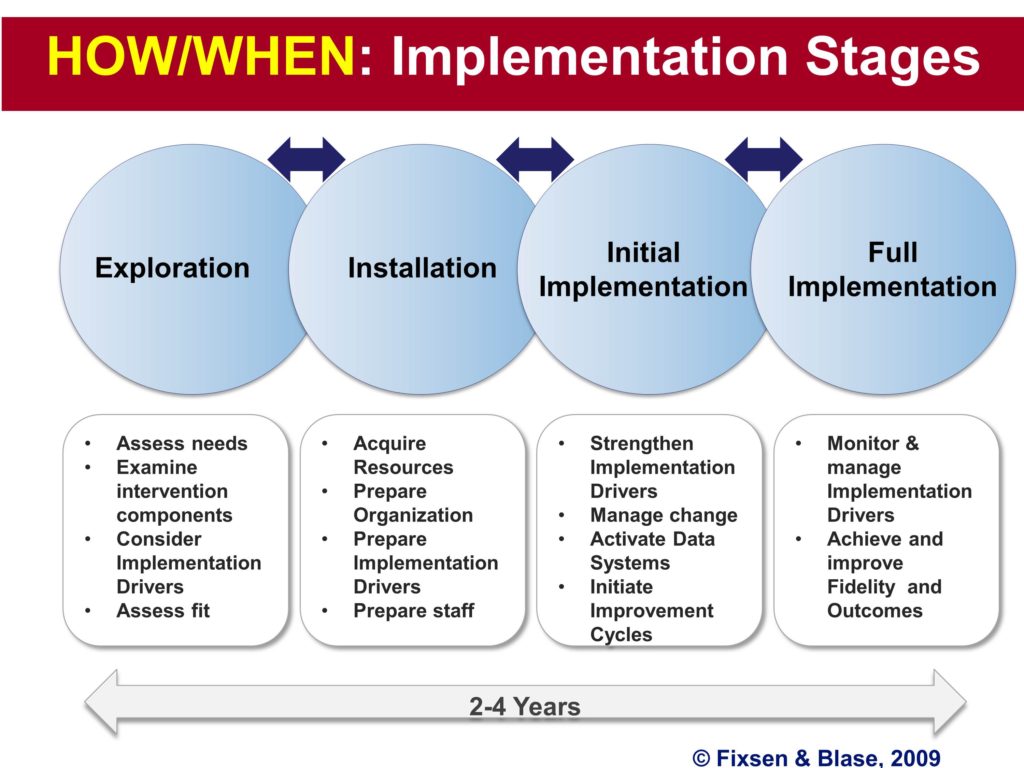
And finally, as mentioned in some of the other aspects of the talk so far, this work definitely unfolds in stages. Some of the frameworks name them different things, but essentially we’re talking about some pre-implementation, some initial start-up and during, and then certainly looking towards more long-term, sustained. This often can take the full rollout, it’s not overnight and it can take multiple years. But at the same time, we’re paying attention to specific aspects of implementation as we go.
It’s not as if we are expecting some kind of latent feedback three or four years later to let us know if we’re on the right path.
Example and Final Thoughts

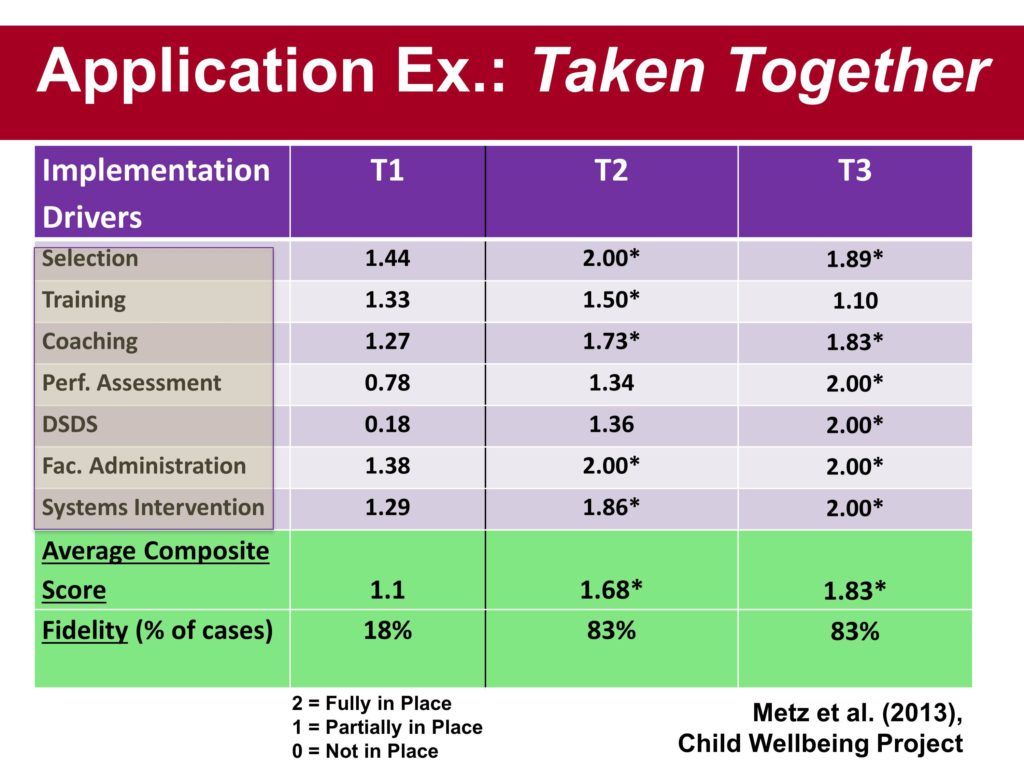
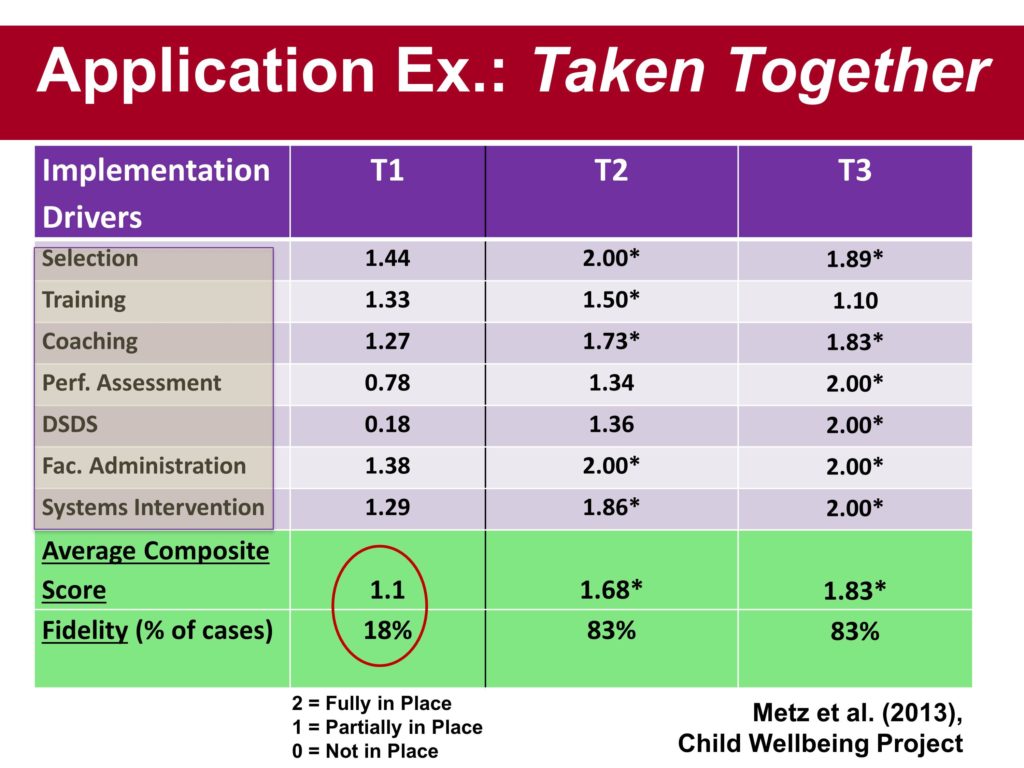

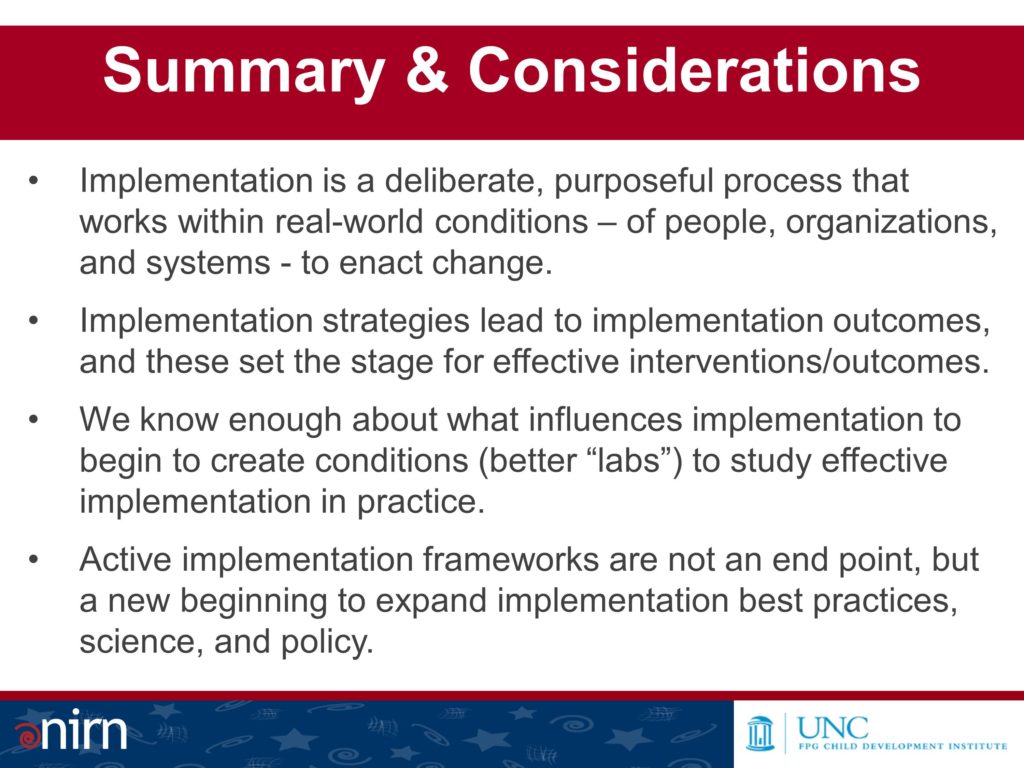
Acknowledgements
